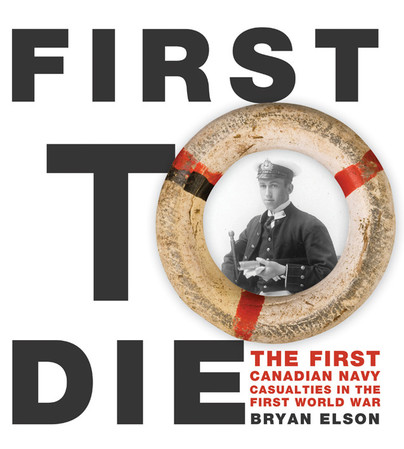
Format: Paperback
Pages: 96
ISBN: 9780887809132
Pub Date: 01 Jan 2011
Illustrations: photographs and illustrations
Description:
This is a story drawn from the early days of the Canadian Navy, an account of four young Canadian seamen who were the Navy's first casualties at the beginning of the First World War. Ironically, many consider them victims of incompetent seamanship by a British naval officer. The four were among the 21 young men who made up the first class of the Royal Navy College of Canada, set up in 1911 shortly after the Canadian Navy itself was established in 1910.
All four sailors were from Canada's Maritime provinces. After their training at the College, they were posted to the British Navy for further experience at sea. William Palmer, first in his graduating class, and Arthur Silver, senior Cadet Captain, both from Halifax, were personally chosen by Rear-Admiral Christopher Cradock to go to war on the large and powerful British vessel Good Hope. Their comrades John Hatheway of Fredericton, and Malcolm Cann of Yarmouth, were also selected, to the disappointment of the remaining men. Within six weeks, these four much-envied comrades were dead as the British warship Good Hope went down with no survivors, sunk by the German navy. First to Die depicts the early history of Canada's navy and the reality of war at sea, experienced through the eyes of the four young midshipmen eager for adventure. The book is extensively illustrated with photographs drawn from key archival and private collections. About the AuthorBryan Nelson is a former officer of the Royal Canadian Navy, and the current director of the Canadian Naval Memorial Trust in Halifax, Nova Scotia. He lives in Halifax.
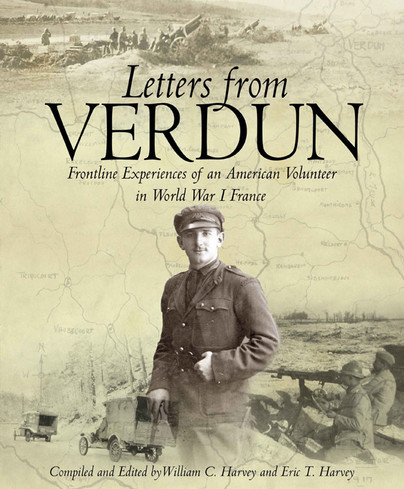
Format: Hardback
Pages: 226
ISBN: 9781932033946
Pub Date: 15 Jan 2010
Illustrations: Illustrated throughout
Description:
• Personal letters detailing a soldier’s analysis of the war and day-to-day life on the front line• Astonishing contemporary photographs bring the many colourful characters vividly to lifeThough the United States was late to enter the Great War, a number of idealistic young Americans wished to take part from the beginning. One of these was Avery Royce Wolfe, a highly educated scion of a family in America’s burgeoning industrial heartland.Volunteering as an ambulance driver with the French Army in the Verdun sector, Royce sent back a constant stream of highly detailed letters describing the bitter experiences of frontline combat, Verdun being the worst battle the French have ever seen, not excluding comments on strategy, the country he encountered, and the Allies’ prospects for success.
Containing expert overviews to set the reader in Royce’s time and place; however, the narrative is most gripping with his own day-to-day perceptions, analytical and emotional in turn. The reader can sympathize with Royce’s dilemma when his original term of service expires and he wonders whether to return home. Then the American army begins to arrive and he decides to continue on. We hear firsthand how the US troops are first kept out of battle, then take casualties no veteran unit would have sustained, because of their fresh-faced audacity. Full of exciting experiences as well as interesting firsthand analyses (such as comparing French and German trenchworks—the latter were far better), Letters from Verdun brings the reader amazingly close to the frontlines of the Great War, almost as if in person.
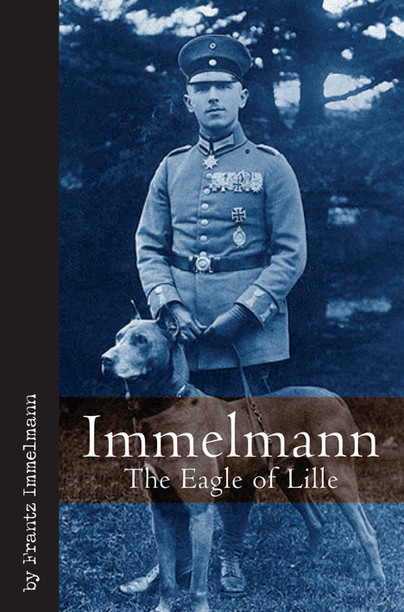
Format: Hardback
Pages: 256
ISBN: 9781932033984
Pub Date: 25 Sep 2009
Illustrations: 16 pages b/w photos
Description:
Max Immelmann was born in Dresden, the son of a paper board container factory owner. When World War I started, Immelmann was recalled to active service, transferred to the Luftstreitkräfte and was sent for pilot training in November 1914. He was initially stationed in northern France as a reconnaissance aviator.
On June 3, 1915 he was shot down by a French pilot but managed to land safely behind German lines. He was decorated with the Iron Cross, Second Class for preserving his aircraft. Later in 1915, he became one of the first German fighter pilots, quickly building an impressive score of air victories. He became known as “The Eagle of Lille” (Der Adler von Lille) due to Lille being one of his favourite scouting areas.Immelmann was the first pilot to be awarded the Pour le Mérite, Germany's highest military honour. The medal became colloquially known as the "Blue Max" in the German Air Service in honor of Immelmann. His medal was presented by Kaiser Wilhelm II in January 1916. Oswald Boelcke received his medal at the same ceremony. Immelmann was credited with 15 victories. His final victory was on 30 March 1916.Immelmann will forever be associated with the Fokker Eindecker, Germany's first fighter aircraft, and the first to be armed with a machine gun synchronised to fire forward, through the propeller arc. Along with Oswald Boelcke and other pilots, Immelmann was one of the main instigators of the Fokker Scourge which inflicted heavy loses upon British and French aircrews during 1915. This new edition has been entirely reoriginated. Not a word has been changed, but the original type and page layout have been reworked, as has been the format in which the book is presented, to give a beautiful new treatment for this classic of aviation literature.
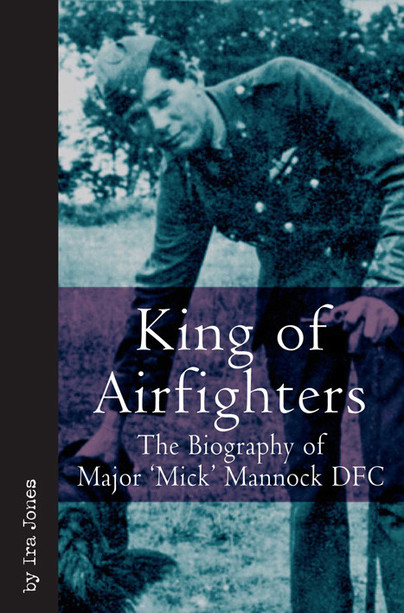
Format: Hardback
Pages: 256
ISBN: 9781932033991
Pub Date: 25 Sep 2009
Illustrations: 16 pages b/w photos
Description:
Ira Jones' biography of Britain's top scoring ace of World War I has become the subject of some controversy over the last few years, most notably as it is the source of the claim of 73 "kills" for Mannock, thereby making him the number one scoring Allied Ace of the war. Later research has thrown serious doubt on this claim and indeed Mannock himself only claimed 51 kills. Jones' biography is nevertheless an important account, especially when seen in the context of the time in which it was first written.
In particular, the biography really gets into the mind of Mannock, the author having been a flying comrade, and portrays the singular nature of his character and the incredible stresses that these pioneer airfighters were under in the last few months of the war by a man who flew in the thick of it.Originally published in 1934 by Ivor Nicholson and Watson in London, this aviation classic has been reprinted many times, yet each time has been reproduced from the original 1930s version of the book. This new edition has been entirely reoriginated. Not a word has been changed, but the original type and page layout have been reworked, as has been the format in which the book is presented, to give a beautiful new treatment for this classic of aviation literature.About the AuthorIra Jones enlisted in 1913. When the war began, he transferred to the Royal Flying Corps and joined 10 Squadron as an air mechanic. In July 1915 he was sent to France and by January 1916 he was flying combat missions as an observer. He was then posted to 74 Squadron in early 1918, where he developed a close bond with his flight commander, Mick Mannock. In just three months he scored 37 victories flying the S.E.5a.
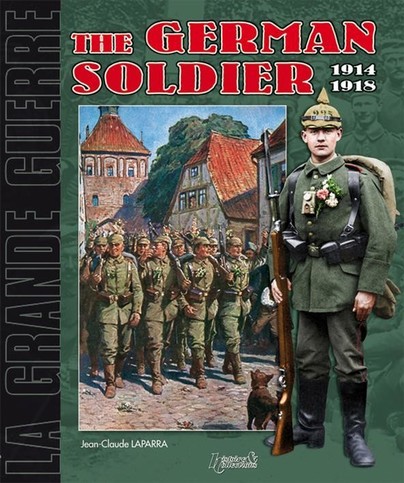
Format: Paperback
Pages: 68
ISBN: 9782352500711
Pub Date: 15 Jul 2008
Illustrations: 150 photos
Description:
This book covers the daily life of the ordinary German infantryman from 1914 to 1918, through “Michel”, the archetype of the German soldier, the national personification of the German people, the symbol of patriotic union. We see his life, his material surroundings, his joys, his hardships, the way he ate, expressed himself, his relationship to authority, mobilization, moving up to the front, life in the front line and the rear, the fighting, his assignment to the assault troops, care in hospital, combined with an examination of the way uniforms and equipment altered as the war went on. The context of the period is also particularly well rendered thanks to extracts from songs in vogue at the time and a host of anecdotes and accurate details which make this book such a unique collection.
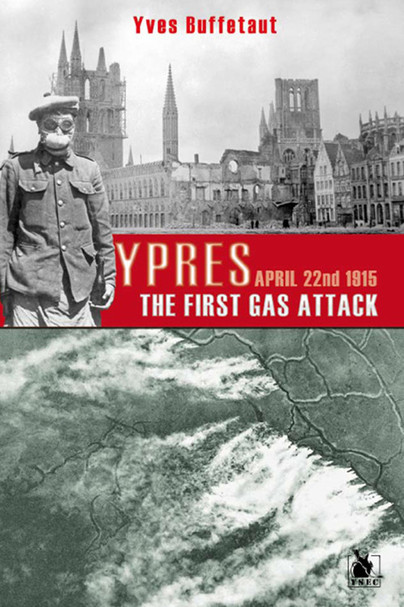
Format: Paperback
Pages: 80
ISBN: 9782846731041
Pub Date: 15 Apr 2008
Imprint: Ysec Editions
Illustrations: 81
Description:
On the 22nd April 1915, towards the end of the afternoon, a strange yellow-green cloud appeared over no man’s land and drifts on the wind towards the French lines in the Langemarck-Pilckem sector, held by the 45th Division and the 87th French Territorial Division. Within just a few minutes, the French troops were suffocated under a cloud of chlorine gas and what few survivors remained were in full flight towards the rear. The Germans, meeting with little or no resistance, captured the Pilckem Ridge and right up to the Yser canal, opening a gaping breach between the French and Canadian lines.
This volume retraces events as they unfold, as well as describing the lead-up to the battle and its immediate consequences. A large majority of the photographs which illustrate this volume have never been previously published.

Format: Paperback
Pages: 64
ISBN: 9782352500414
Pub Date: 25 Jan 2008
Series: Les Armées de la Grande Guerre
Illustrations: colour and b/w throughout
Description:
This work offers thirty or so concise but precise biographies of French World War I Generals. All ranks of generals rub shoulders, from the simple brigadier to the generals destined to become Maréchals. Some are famous; others renowned in their time are now unknown to the general public.
The reader discovers the different careers, both typical and unusual, which enabled these men to reach this rank; there is also information which goes against the grain of generally accepted ideas. All the generals are mentioned, from the generals of the "14 Generation" to those of 1918, who advanced because of the conflict; also discussed are the various sackings, the different contexts and the spirit of the times; the clans, the different schools, skills and negligence, political affinities and their influence; the generals who fell at the front and the true faces of men praised or reviled by History, all with anecdotes and details still as yet unpublished.This study, the first of its type, is captivating from beginning to end and is complemented by unpublished pictures; it enables the reader to put faces to the names of the main protagonists of the Great War; it's all about the men from all walks of life who, far from forming a rigid caste like their counterparts on the other side of the Rhine, reflected the diversity of French society at the time.An undisputed specialist of 20th Century French Army history and a former officer, Paul Gaujac served in the paratroopers, in the air transport command, at the nuclear submarine headquarters and then at that of the Army, finishing his career as head of the Historical Department of the Armée de Terre. He has published twenty works, three of them with Histoire & Collections.







